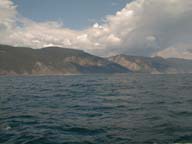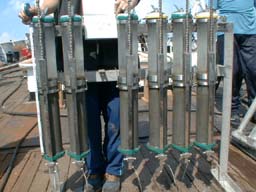The main purpose of this workshop
The main purpose of the workshop is to exchange terrestrial information on lacustrine sediments (Lake Baikal, Lake Biwa and Paleo-Katmandu Lake) and aeolian sediments (Loess Plateau in China) for clarifying long-term environmental changes in East Eurasia.
Lake Baikal, located in eastern Siberia, is highly sensitive to solar insolation, the entire lake remained uncovered by ice sheets throughout the Pleistocene, and sedimentation has been continuous for at least the past 10 million years and its beginning is estimated to be 30 million years. It has been gradually clarified that Baikal sediments include precious information on long-term environmental changes.
Loess sediments in China are distributed broadly in Northern China, especially
much in and around the Loess Plateau and include information on long-term
changes in wind system (Asian monsoon fluctuation). It was said that the
beginning of loess sedimentation was synchronized with the Major Northern
Hemisphere glaciation (2.7 Ma), but recently it has been suggested that
the beginning may be much older, 7-22 Ma.
Located in the middle latitudinal zone, both Lake Baikal and Loess Plateau
are not only affected by westerly circulation, but also controlled by
East Asia monsoon. Therefore climates and environments of Lake Baikal
and Loess Plateau are closely related to each other and eventually to
remote forcing factors such as the polar snow and ice and tropical sea
surface temperature via the atmospheric circulation.


In addition, surrounding terrestrial information from Lake Biwa (located
in the eastern margin of Eurasia, 0.5 Ma continuous, max. c. 5 Ma) and
Lake paleo-Katmandu (located in the southern margin of Tibetan Plateau,
2.5 Ma, max. c.5.0 Ma) also include high-resolutional information on paleo-
environment related to monsoonal changes in East Eurasia, which is of
help for proper understanding of long-term fluctuations.
Hence, systematic exchange of terrestrial information in East Eurasia
in the workshop will be of great use for process-based interpretation
of global changes.
